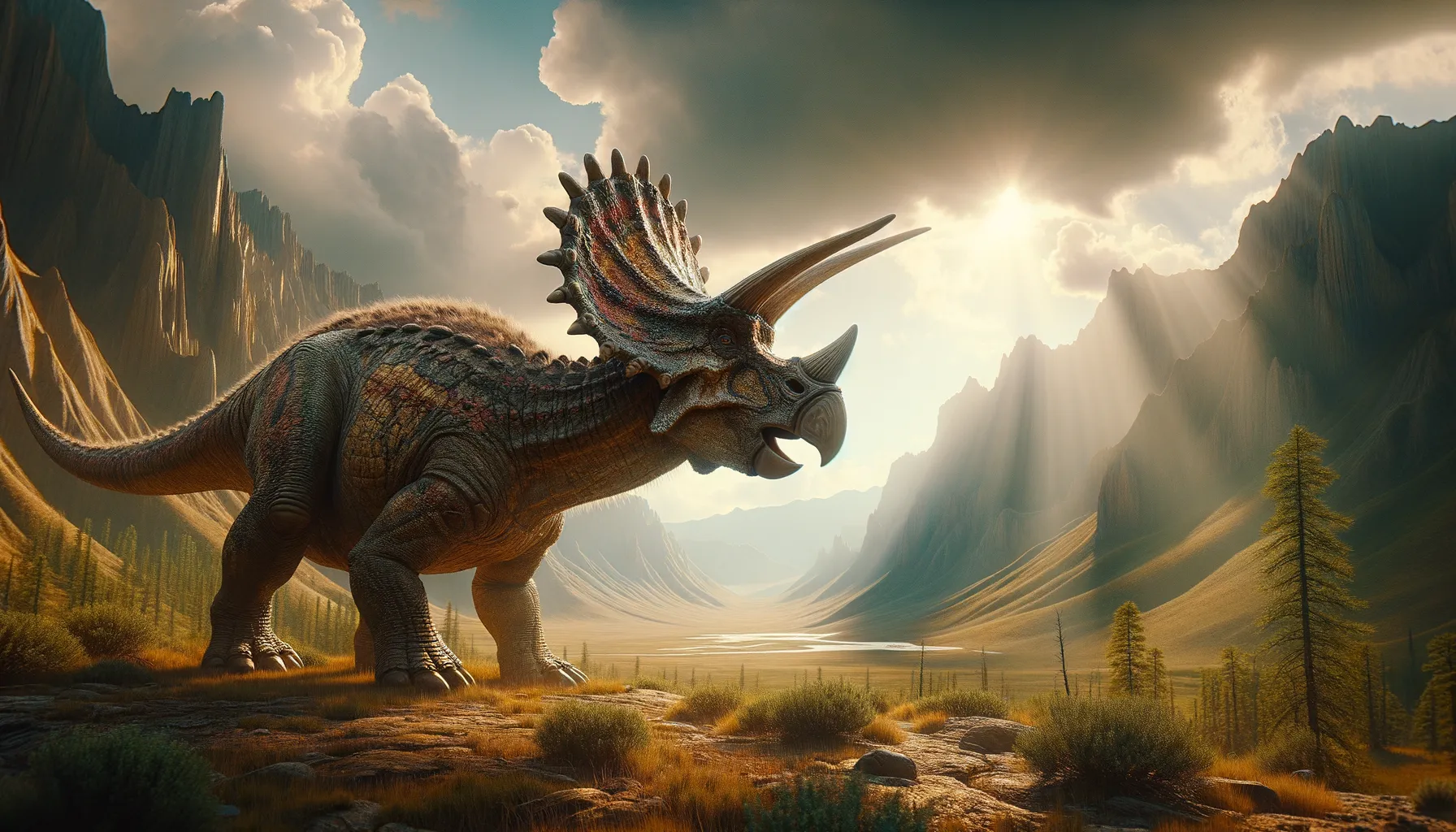
Breviceratops
Small yet mighty, a ceratopsian marvel!
Period
Cretaceous
Length
About 2 meters long.
Height
Approximately 1 meter tall.
Weight
Around 150 kilograms.
Breviceratops was a small ceratopsian dinosaur that lived during the Late Cretaceous period. Known for its relatively small size compared to other ceratopsians, it possessed a short frill and lived in what is now Mongolia. Its fossil remains provide valuable insights into the diversity and evolution of ceratopsians in Asia. Though not as famous as its larger relatives, Breviceratops is a fascinating subject for those interested in the variety of dinosaurs that once roamed the Earth.
Diet
Breviceratops was herbivorous, feeding on a variety of plants. Its beak and teeth were adapted for chewing tough vegetation, like cycads and conifers.
Hunting
As an herbivore, Breviceratops did not hunt. Instead, it foraged for plants in its environment. Its feeding strategies likely focused on areas with abundant plant growth.
Environmental challenges
Breviceratops faced environmental challenges such as fluctuating climates and limited resources. Its region would have experienced seasonal changes affecting plant life, requiring adaptability. Furthermore, it had to cope with predators that roamed the area, likely using its herd behavior and speed, albeit slow, as defense.
Speed
Relatively slow due to its stocky build.
Lifespan
Estimated to be around 10 to 15 years.
First discovery
Discovered in the 1970s in Mongolia.
Fun Facts
- Breviceratops was a small dinosaur that lived approximately 85 million years ago during the Late Cretaceous period.
- The name 'Breviceratops' means 'short horned face,' reflecting its horned appearance, although its horns were quite short.
- Fossils of Breviceratops have been primarily found in what is now Mongolia, giving us valuable insight into the diverse prehistoric life there.
- Despite its small size, Breviceratops was part of the ceratopsian family, which includes much larger relatives like Triceratops.
- Breviceratops was a herbivore, which means it likely fed on the lush vegetation that existed during its time.
- As a member of the ceratopsians, Breviceratops would have had a frill at the back of its head, an iconic feature of this dinosaur family.
- This dinosaur is an example of how diverse and prolific the ceratopsians were, showcasing a wide range of sizes and adaptations.
Growth and Development
Breviceratops would have gone through several growth stages, from hatchling to adult. Its size suggests a relatively fast development to reach maturity quickly. Like other ceratopsians, it likely grew rapidly during its juvenile stage, supported by a diet rich in available plant resources.
Habitat
Breviceratops inhabited the semi-arid regions of Late Cretaceous Mongolia. The landscape was dominated by open habitats, with patches of forest and river systems. This environment supported a diverse array of plant life, perfect for a small herbivore.
Interaction with other species
Breviceratops likely interacted with other herbivorous dinosaurs in its area, competing for resources. It also would have had to stay vigilant of predatory species sharing its environment. Its social structure, possibly involving group living, might have been a strategy for defense and efficient foraging.
Natural lifespan
Breviceratops had an estimated lifespan of 10 to 15 years.
Reproduction
Breviceratops likely laid eggs, as is common with dinosaurs. Nesting sites would have been carefully chosen to ensure the safety and development of eggs. Parental care might have involved guarding the nest until the eggs hatched, although specific behaviors are speculative.
Social behaviour
Breviceratops is thought to have lived in groups, which provided safety in numbers against predators. Social behaviors could have included coordinated movements and foraging strategies. Such group dynamics would have strengthened the species' survival in a challenging Cretaceous environment.
Fossil locations
Fossils of Breviceratops have been discovered in Mongolia, primarily in the Gobi Desert region. These areas are rich in Late Cretaceous deposits, providing numerous insights into dinosaur diversity. The fossil record of this dinosaur helps paleontologists understand ceratopsian evolution in Asia.
